First, check the pressure in the fuel supply system by connecting a pressure gauge to the fitting on the fuel rail in the engine compartment (see «Checking the fuel pressure in the engine power system»).
If the pressure in the supply system is above 400 kPa (4.0 kgf/cm2), then the pressure regulator installed in the fuel pump module is faulty and must be replaced (see «Fuel pump repair»).
If the pressure in the supply system is below 380 kPa (3.8 kgf/cm2), replace the fuel filter (see «Fuel filter replacement»).
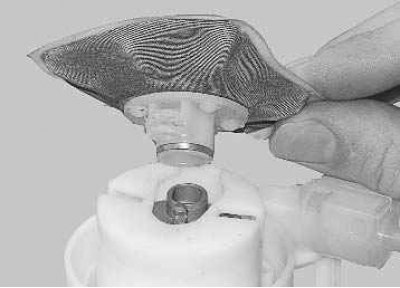
If this does not help, try removing the pump and flushing the mesh of its receiver.
If the pressure still does not rise, the fuel pump must be replaced.
You will need a key «at 13».
1. Reduce the pressure in the supply system (see «Reduced fuel pressure in the engine power system»).
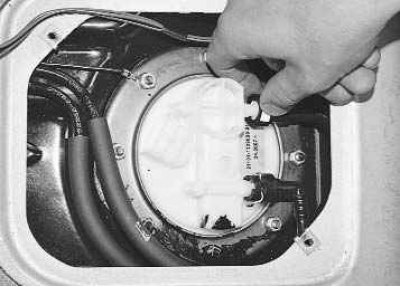
2. Squeeze the plastic tab..
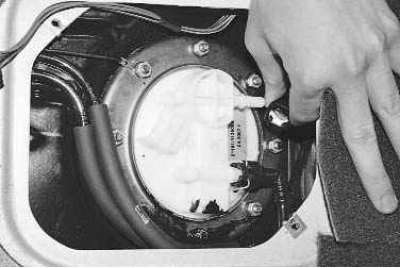
3.... and disconnect the fuel pipe from the pump fitting.
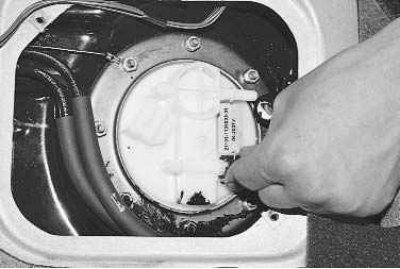
4. Squeeze out the spring clip..
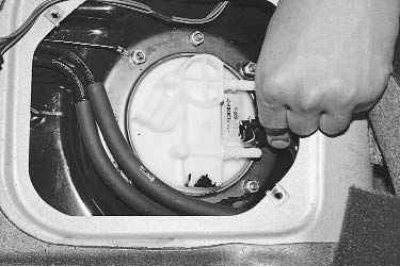
5.... and disconnect the fuel pipe from the second pump fitting.
Attention! Disconnect the hoses from the fuel pump fittings carefully, avoiding lateral forces so as not to break the fitting.
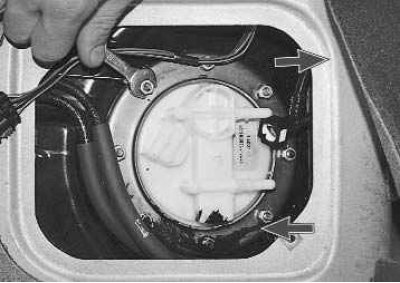
6. Loosen the fastening nut «masses» …
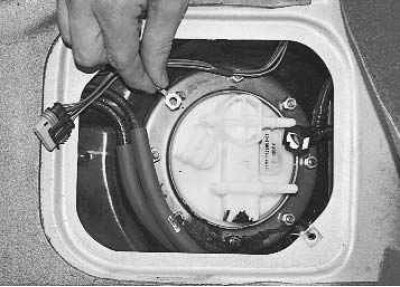
7.... and remove the wire contact from the stud.
8. Unscrew the remaining seven nuts securing the pressure ring around the entire perimeter..
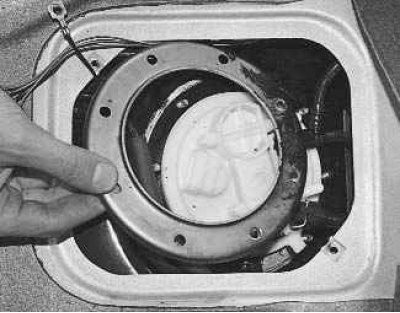
9.... and remove the ring.
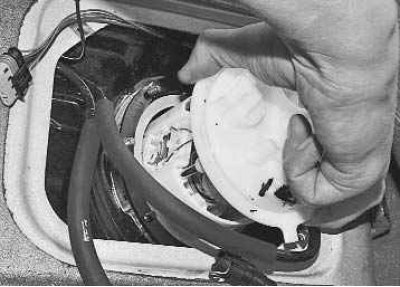
10. Remove the pump from the tank by tilting it to the side so as not to bend the lever of the fuel gauge sensor, otherwise the fuel gauge readings in the instrument cluster will be incorrect.
11. Remove the fuel pump rubber o-ring from the tank flange. A cracked ring that has lost its elasticity must be replaced with a new one.
12. Install the fuel pump and all removed parts in the reverse order of removal.
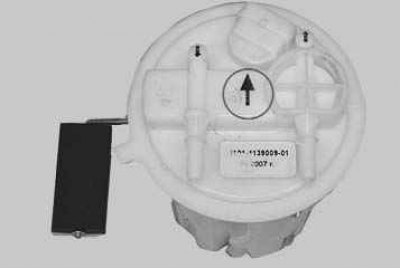
Note. When installing the fuel pump module into the fuel tank, the arrow on the fuel pump cover must point towards the rear of the vehicle.
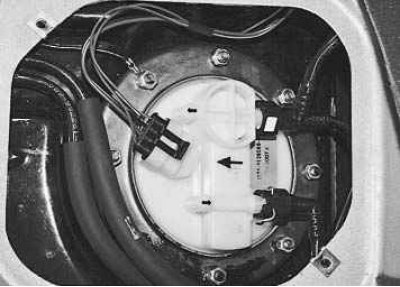
When connecting fuel lines, be guided by the arrows on the fittings indicating the direction of fuel supply.
